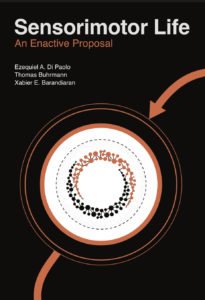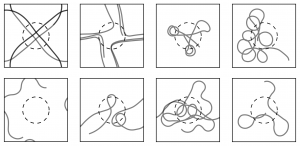On Thursday, Dec 2nd, 2021 at 11:30
To participate, please contact: alejandra.mtz.quintero@gmail.com
Abstract:
Living beings are the result of a cocktail made with unknown doses of chance and necessity. Consider a thought experiment, in which we could rewind the ‘tape of life’ starting from the same initial conditions, what biochemical traits and cellular features would finally be the same as those we observe today? It is clear that what is real in biology is a subset of what is possible, and this issue has been discussed at different scales. Thus, structural and dynamic developmental constraints limit the space of solutions for animal bodies (Alberch, 1989), whereas physicochemical restrictions and historical contingencies shape the possible at the molecular level (Jacob, 1981). Meteorite analysis and many organic syntheses performed under prebiotic conditions indicate that the primitive Earth was home of a moderately complicated chemodiversity, including the most common biological building blocks – sugars, fatty acids, amino acids, nucleobases, etc. (Lazcano, 2018). In this period of chemical evolution, physicochemical constraints (i.e. thermodynamics and kinetics in a given environment) determined the origin and maintenance of the abiotic chemical landscape. The chemically possible was the scenario for the organization of the most simple and primitive biochemical systems: autocatalytic cycles for self-maintenance of a set of building blocks, self-reproduction of lipid vesicles, and self-replication of genetic templates (Peretó, 2012). Presumably, all these cycles kicked off in the absence of catalysts or with the involvement of very simple and unspecific facilitators (e.g. mineral surfaces). The emergence of optimizable catalysts through natural selection (e.g. ribozymes) was a phase transition to a period of a more efficient and creative functional screening of the possible (de Duve, 2005). Diverse lines of evidence indicate that metabolic surveys of alternative sources of matter and energy were rapid and explosive, performed by the first microbial communities. Biogeochemical closing of the recycling of bioelements was a vital step for a sustainable and long-term continuity of terrestrial life (Falkowski et al., 2008). Thus, the boundaries of the metabolically possible were expanding in parallel to the coevolution of life and the planet. For instance, after the emergence in some cyanobacterial ancestors of the enzymatic machinery able to extract electrons from water to feed the photoelectronic chain, molecular oxygen accumulated in oceans and afterwards in the atmosphere. Those microorganisms able to cope with this new-to-life compound took advantage of its reactivity and dramatically expanded the world of the metabolically possible: many new metabolites, including steroids, and processes (e.g. oxygen respiration) became available to life. Thus, recurrent patterns in actual cell metabolisms are the result of a long evolutionary exploration within the chemically constrained space of the possible solutions under specific yet changing conditions (de Lorenzo et al., 2014).
Full text: https://sfamjournals.onlinelibrary.wiley.com/doi/10.1111/1751-7915.13691


 Date and time: 25th June 2013, at 11.00
Date and time: 25th June 2013, at 11.00